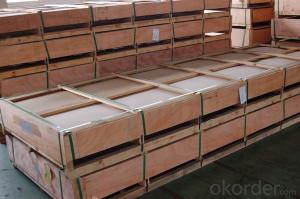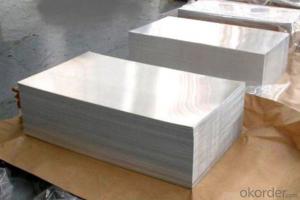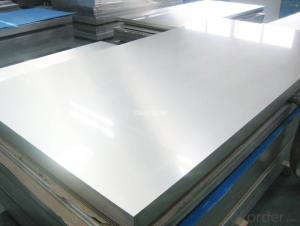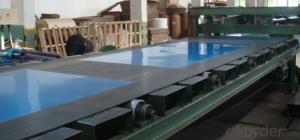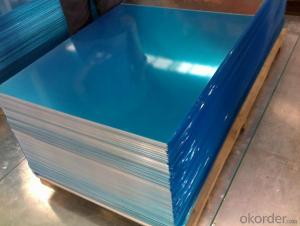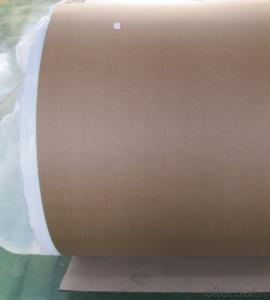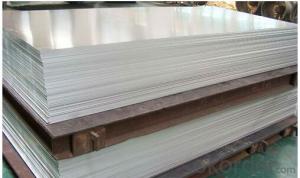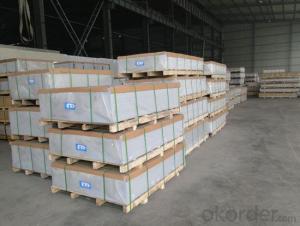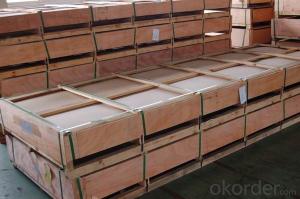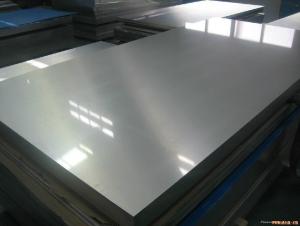Aluminum Oxide Sanding Sheets for Aluminum Sheets AA3004 Construction
- Loading Port:
- Shanghai
- Payment Terms:
- TT OR LC
- Min Order Qty:
- 5 m.t.
- Supply Capability:
- 10000 m.t./month
OKorder Service Pledge
OKorder Financial Service
You Might Also Like
Specification
1.Structure of Aluminum Sheets AA3004 Used for Constrcution Description
Aluminum Sheets AA3004 Used for Constrcution has great ductility, heat conductivity, anti-corrosion and moisture resistance properties.
Aluminum Sheets AA3004 Used for Constrcution is widely used for electronics, instruments, lighting decoration, packing industry, house decoration, curtain wall, honeycomb-core panel, sandwich panel, aluminum composite panel and aluminum composite pipes.
2.Main Features of Aluminum Sheets AA3004 Used for Constrcution
• Superior quality of raw material
• Reasonable and stable chemical composition
• Accurate tolerance
• Goode mechanical property
3.Aluminum Sheets AA3004 Used for Constrcution Images
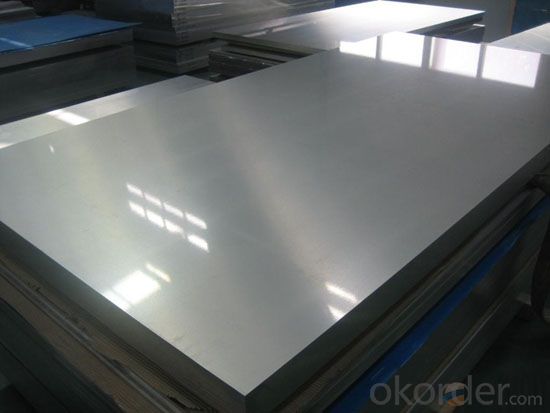
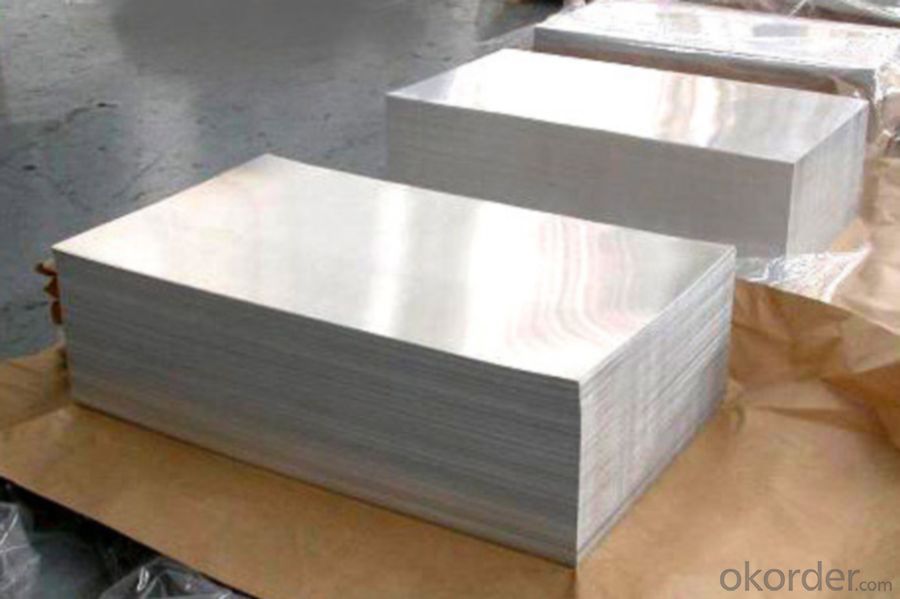
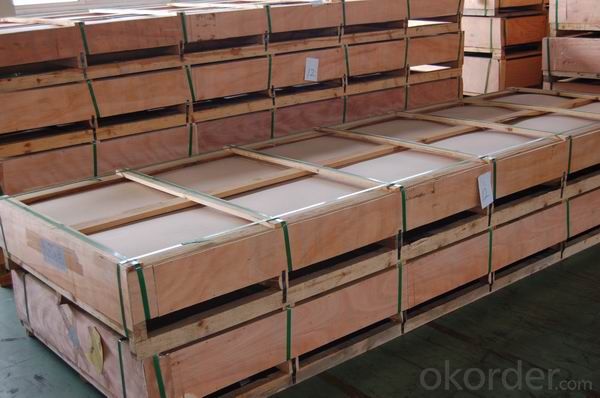
4.Aluminum Sheets AA3004 Used for Constrcution Specification
Alloy | AA3004 |
Temper | H14, H16, H18, H22, H24, H26, H32, O/F |
Thickness | 0.2mm -- 100mm |
Width | 30mm -- 1700mm |
Standard | GB/T 3880-2006,EN,ASTM,JIS |
5. FAQ of Aluminum Sheets AA3004 Used for Constrcution
A.How to guarantee the quality?
Customers are welcome to our mill to visit and check the products. Besides, we can arrange a third party to test Aluminum Sheets AA3004 Used for Constrcution.
B.When will you deliver the products?
Aluminum Sheets AA3004 Used for Constrcution will be delivered within 35 days after receiving advanced payment or original L/C.
- Q: How are aluminum sheets tested for quality and compliance with industry standards?
- Aluminum sheets are tested for quality and compliance with industry standards through a comprehensive set of tests and inspections. These tests ensure that the aluminum sheets meet the required specifications and performance criteria. One of the commonly used tests is the visual inspection, where the sheets are examined for any surface defects such as scratches, dents, or cracks. This is crucial to ensure a smooth and flawless appearance. Further, dimensional checks are performed to verify the thickness, width, and length of the sheets. Precise measurements are necessary to meet the specific requirements of the intended application. To assess the mechanical properties, various tests are conducted. Tensile strength tests evaluate the maximum load the aluminum sheet can withstand before breaking. This helps determine the sheet's structural integrity and its ability to withstand external forces. Similarly, hardness tests measure the sheet's resistance to indentation or penetration, providing insights into its durability and resistance to wear. Chemical composition analysis is also conducted to ensure that the aluminum sheets contain the necessary alloying elements within the specified limits. This analysis helps confirm that the material composition aligns with industry standards, as different alloy compositions can affect the sheets' mechanical properties and suitability for various applications. Surface integrity is evaluated through corrosion resistance tests, which assess the sheet's ability to withstand environmental factors such as moisture, chemicals, and temperature variations. This is particularly important for applications where aluminum sheets are exposed to corrosive substances or harsh environments. In addition to these tests, aluminum sheets may undergo non-destructive testing techniques such as ultrasonic testing or eddy current testing. These methods help identify internal defects or irregularities that may not be visible through visual inspection alone. Overall, a combination of visual inspections, dimensional checks, mechanical tests, chemical composition analysis, and surface integrity evaluations are employed to ensure that aluminum sheets meet the quality standards and compliance requirements set by the industry. These rigorous testing procedures guarantee that the sheets are fit for their intended purpose and meet the expectations of customers.
- Q: Are aluminum sheets suitable for use in food processing or storage?
- Yes, aluminum sheets are suitable for use in food processing or storage. Aluminum is a non-toxic and non-reactive metal, making it ideal for direct contact with food. It provides a protective barrier against light, oxygen, and moisture, which helps to maintain the quality and freshness of food. Additionally, aluminum sheets are lightweight, durable, and can be easily cleaned, making them a popular choice in the food industry.
- Q: Are aluminum sheets suitable for hydraulic applications?
- Indeed, aluminum sheets prove to be fitting for hydraulic applications. Being both lightweight and resistant to corrosion, aluminum serves as a remarkable option for hydraulic systems. Its commendable thermal conductivity aids in effectively dispersing heat produced during hydraulic operations. Furthermore, aluminum sheets can be effortlessly shaped and machined to fulfill precise design needs, rendering them adaptable for an array of hydraulic components including reservoirs, tanks, and piping systems. Nevertheless, it is crucial to bear in mind the pressure and temperature prerequisites of the hydraulic application, given that aluminum possesses inferior strength and melting point in comparison to metals like steel.
- Q: Can aluminum sheets be easily shaped or bent?
- Yes, aluminum sheets can be easily shaped or bent. Aluminum is known for its excellent malleability and ductility, which allows it to be easily formed into various shapes and bends. It can be manipulated using a variety of techniques such as rolling, pressing, or even using hand tools. The malleability of aluminum makes it a preferred choice in industries such as automotive, aerospace, and construction, where it is commonly used in the production of parts and structures that require complex shapes and bends. Additionally, aluminum's lightweight and corrosion-resistant properties further contribute to its suitability for shaping and bending processes.
- Q: Are aluminum sheets suitable for automotive body reinforcements?
- Aluminum sheets, indeed, prove to be a fitting option for reinforcing automotive bodies. With its lightweight properties and exceptional strength-to-weight ratio, aluminum emerges as the perfect candidate for various automotive applications. Furthermore, its resistance to corrosion becomes vital for vehicles navigating through diverse weather conditions and encountering road salts. Moreover, the malleability and weldability of aluminum sheets make them easily adaptable and seamlessly integrated into the body structure. By incorporating aluminum sheets in automotive body reinforcements, the overall weight of the vehicle diminishes, leading to enhanced fuel efficiency and performance. Additionally, the recyclable nature of aluminum aligns perfectly with the automotive industry's growing emphasis on sustainability. Therefore, unquestionably, aluminum sheets represent an ideal choice for reinforcing automotive bodies.
- Q: What are the different types of coatings available for aluminum sheets?
- There are various types of coatings available for aluminum sheets, including anodized coatings, paint coatings, powder coatings, and laminated coatings.
- Q: Can aluminum sheet be used for automotive body panels?
- Yes, aluminum sheet can indeed be used for automotive body panels. Aluminum is a lightweight and corrosion-resistant material, making it desirable for improving fuel efficiency and increasing vehicle performance. It is widely used in the automotive industry to manufacture body panels, such as hoods, doors, fenders, and roofs, as it offers strength, durability, and design flexibility.
- Q: Can aluminum sheets be stamped or pressed?
- Yes, aluminum sheets can be stamped or pressed. Aluminum is a highly malleable metal that can be easily shaped and formed through various manufacturing processes. Stamping and pressing are commonly used techniques to create intricate designs, shapes, and patterns on aluminum sheets. These processes involve applying pressure to the sheet using specialized equipment, such as stamping presses or hydraulic presses, to deform the material and create the desired shape. Stamping and pressing are widely used in industries such as automotive, aerospace, construction, and manufacturing, where aluminum sheets are often used for their lightweight, durable, and corrosion-resistant properties.
- Q: Are aluminum sheets suitable for medical applications?
- Yes, aluminum sheets are suitable for medical applications. Aluminum is a lightweight and durable material that is resistant to corrosion, making it suitable for medical equipment and devices. It is commonly used in the production of medical instruments, diagnostic imaging systems, and surgical trays. Additionally, aluminum sheets can be sterilized easily, further enhancing their suitability for medical applications.
- Q: What are the different methods of surface cleaning aluminum sheets?
- There are several methods for surface cleaning aluminum sheets, depending on the level of dirt or contamination present. Here are some of the most commonly used methods: 1. Mechanical Cleaning: This method involves physically scrubbing the surface of the aluminum sheet using brushes, abrasive pads, or sandpaper. It is effective for removing light dirt, grease, or oxidation. However, caution should be exercised to avoid scratching or damaging the surface. 2. Chemical Cleaning: Chemical cleaning involves the use of specific cleaning agents or solutions to remove dirt, stains, or oxidation from the aluminum sheet. Commonly used chemicals include alkaline cleaners, acidic cleaners, and solvents. It is important to follow the manufacturer's instructions and take necessary safety precautions when working with chemicals. 3. Pressure Washing: Pressure washing utilizes high-pressure water jets to remove dirt, grime, and other contaminants from the surface of aluminum sheets. It is a quick and efficient method, particularly for large or heavily soiled surfaces. However, care should be taken to avoid using excessive pressure, which may dent or damage the aluminum. 4. Electrolytic Cleaning: This method involves the use of an electrolyte solution and an electric current to remove corrosion, oxidation, or tarnish from the aluminum sheet. The sheet is submerged in the electrolyte bath, and the electric current helps to dissolve the contaminants. Electrolytic cleaning is particularly effective for heavily oxidized or tarnished surfaces. 5. Chemical Etching: Chemical etching is a process that uses a combination of chemicals to selectively remove the surface layer of the aluminum sheet. It is commonly used for removing anodized coatings or for creating decorative patterns on the surface. However, this method requires specialized equipment and expertise. It is important to note that the choice of cleaning method should be based on the specific requirements of the aluminum sheet, the level of contamination, and the desired outcome. It is always recommended to consult the manufacturer's guidelines or seek professional advice to ensure the most appropriate and safe cleaning method is used.
Send your message to us
Aluminum Oxide Sanding Sheets for Aluminum Sheets AA3004 Construction
- Loading Port:
- Shanghai
- Payment Terms:
- TT OR LC
- Min Order Qty:
- 5 m.t.
- Supply Capability:
- 10000 m.t./month
OKorder Service Pledge
OKorder Financial Service
Similar products
Hot products
Hot Searches
Related keywords
